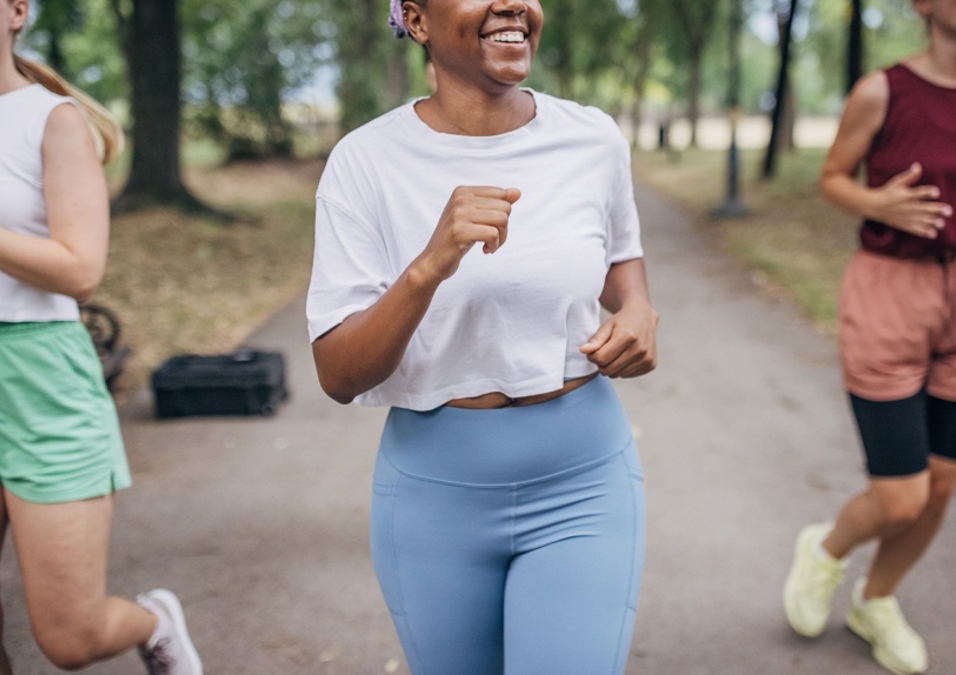5 Ways Exercise Boosts Happiness

SIGN UP FOR YOUR FREE DAY PASS TODAY!
Think back to your childhood when movement was second nature and brimming with joy.
Whether it was racing your family to the front door, jumping on the bed during a sleepover, playing a team sport, or cycling around the park, movement used to be fun.
However, as we grow up, the joy of movement often fades, overshadowed by everyday responsibilities.
What once was spontaneous is now seen as an obligation—something we must do for our health or fitness.
For some, movement has become time-consuming or even painful due to injury, illness, or aging. But neglecting movement can be detrimental to our well-being.
Research shows that physical activity and exercise are not only good for our bodies but also closely linked to our mental health and mood.
“I always say that exercise is like an intravenous dose of hope,” psychologist Kelly McGonigal told CNN's Dr. Sanjay Gupta on his podcast Chasing Life.
“And it’s any form of movement that you’re willing to do with any part of your body that you can still move.”
McGonigal, author of “The Joy of Movement,” is a group fitness instructor and lecturer at Stanford University.
She has used exercise to manage her own anxiety and depression. She explains that during muscle contractions, our bodies produce “hope” molecules known as myokines, which have antidepressant effects.
“Our muscles do more than just move our bones around or stabilize our skeleton,” she said.
“They function almost like endocrine organs, producing molecules that circulate in the bloodstream and affect all our organs.
Some can even cross the blood-brain barrier and influence our mood and brain health.”
According to McGonigal, exercise helps us see our bodies as allies.
“This is one of the coolest aspects of movement and exercise science—it makes us feel like our body is a friend and partner, not something to fix or control.”
McGonigal also noted that exercise releases various brain chemicals that can change our state of mind, resulting in phenomena like a runner’s high, flow states, and euphoria.
“There are many different brain states you can experience through movement; it’s not just one thing,” she said. You can listen to the full discussion here.
Interested in finding joy in movement again?
Here are five tips from McGonigal:
Take your workout outside
Experience nature while you exercise. Mindful movement and being outdoors can heighten your awareness and create a sense of vitality and connection to life.
Pump up the volume
Play your favorite high-energy music while working out. Moving to the beat can elevate your heart rate and mood, making you feel incredible and connected to others.
Group exercise
Exercise socially to build friendships and support networks.
Physical activity can make you less lonely and improve relationships by priming your brain chemistry for social connections.
Get back to basics
Engage in activities you genuinely enjoy. Recall positive experiences with movement and revisit them or find new ways to enjoy them.
Change your mindset to gratitude
Appreciate your body for its ability to move. Shift your focus from monitoring to gratitude, thanking your body for its energy and capabilities.
We hope these tips help you rediscover the joy of movement. Listen to the full episode here.
Join us next week on the Chasing Life podcast, where Dr. Gabor Maté will discuss how past trauma impacts present-day health.
Source: ctvnews
The opinions shared in the GymNation blog articles are solely those of the respective authors and may not represent the perspectives of GymNation or any member of the GymNation team.































































